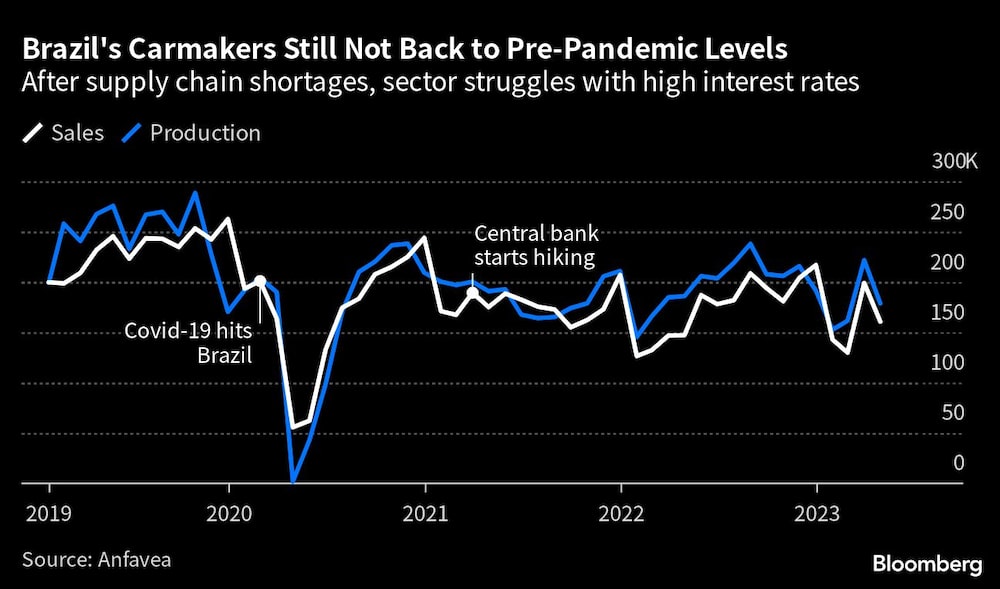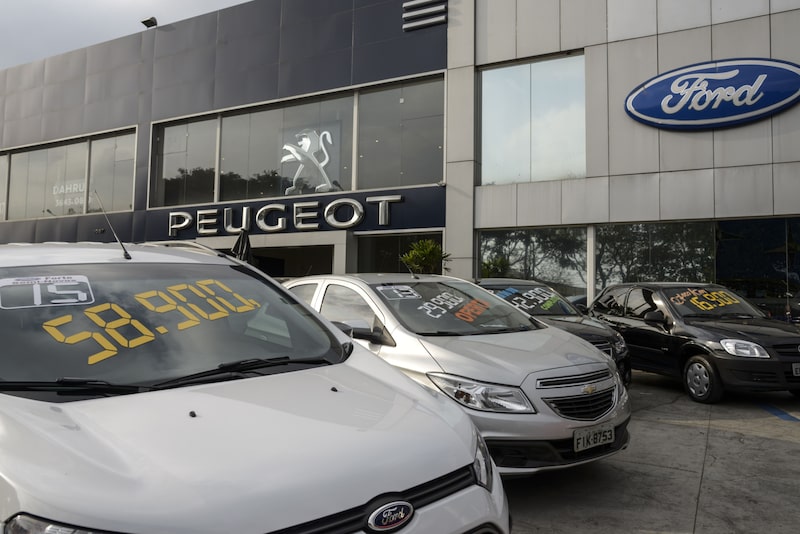Bloomberg — President Luiz Inacio Lula da Silva rolled out a series of tax breaks to make low-priced vehicles more accessible for working families, as he looks to breathe fresh life into Brazil’s battered manufacturing sector.
The government on Thursday unveiled a package of tax reductions on vehicles that cost 120,000 reais ($23,875) or less, measures it projects will reduce sticker prices on some cars by nearly 11%.
The reduction “will take into account the social aspect, it will not make discounts for an expensive car,” Vice President Geraldo Alckmin said at the presidential palace in Brasilia, after he and Lula met with industry leaders.
The discounts are part of Lula’s efforts to resurrect Brazil’s once-mighty automotive industry, and with it his nation’s image as an economic heavyweight, as high interest rates deepen the challenges facing it. The measures, the leftist leader said during a speech in Sao Paulo, would help boost a sector that in recent years has produced fewer cars than it did at the end of his previous presidency in 2010.
The plan was welcomed by industry leaders. Marcio de Lima Leite, the president of the Brazilian Association of Automotive Vehicle Manufacturers, or Anfavea, told reporters that the new policy would cause the price of some cars to fall below 60,000 reais.
But it remains far from certain that the reduction will be enough to reverse the auto industry’s declining fortunes.
After the one-two punch of the pandemic and shortages of key inputs, carmakers are now reeling from high borrowing costs that have put financing out of reach. Sales are weak. Factories are furloughing workers and temporarily shutting their doors. And executives openly worry about the damage high interest rates have already caused.
“It is the fundamental factor that is affecting the market,” Rafael Chang, President of Toyota Motor Corp in Brazil, said in an interview.
A benchmark rate of 13.75%, the highest in more than six years, has hastened the sector’s long decline, raising costs for both businesses and buyers. For regular consumers, the base rate translates into whopping annual financing costs of nearly 29%.
Since returning to power in January, Lula, a 77-year-old former trade unionist, has blasted Brazil’s current monetary policy and demanded that the central bank begin cutting rates to boost businesses of all types. But with the bank signaling that rate cuts remain far off, the government has sought alternative paths forward.
Brazil’s national development bank, known as BNDES, also on Thursday announced a plan worth 44 billion reais to help manufacturers access cheaper credit by offering lower interest rates to companies that want to invest in innovation. The plan was developed because Brazil’s industrial sector requires subsidies to remain competitive while interest rates are high, BNDES head Aloizio Mercadante said at an industry event in Sao Paulo.

The auto industry has long enjoyed special treatment, as leaders have sought to keep factories humming and ensure that Brazilians have cars to drive. Thirty years ago, President Itamar Franco introduced so-called popular cars and convinced Volkswagen to revive an affordable version of the Beetle. The plan was wildly successful, and “Fuscas,” as the model is known locally, are still commonly seen cruising the streets of Rio de Janeiro and other cities.
In his first two terms as president, Lula repeatedly gave tax breaks to carmakers as long as they agreed not to lay off workers. That type of government aid disappeared under his conservative successors, Michel Temer and Jair Bolsonaro, and cars became more expensive.
Once a major catalyst of growth that helped Latin America’s largest economy industrialize in the 20th century, carmakers here have struggled against global competitors. China’s hunger for goods like beef and iron ore has given rise to other sectors and made exporting raw materials preferable to automobiles.
In 2019, Ford shuttered its plant in São Bernardo do Campo, an industrial São Paulo suburb where Lula launched his political career nearly four decades ago. Toyota is slated to do the same at the end of this year.
More recently, Covid-19 and a worldwide shortage of semiconductors caused auto production to plummet. Sales remain well below pre-pandemic levels, totaling 160,730 in April compared to 267,546 in April 2019, according to Anfavea.
The drop in demand that has resulted from high borrowing costs has led major brands, including General Motors Co, Hyundai and Mercedes-Benz AG, to temporarily halt production. In all, Anfavea says there have been 13 plant stoppages across the country this year.
Autoworkers, like many across the economy, are feeling the pinch.
“There is a desire to take all the workers who have lost their jobs and send them in front of the central bank,” said Moises Selerges, president of the Union of Metalworkers for the São Bernardo area, which represents about 72,000 people. “I don’t see any justification.”
The central bank, which enjoys autonomy from the executive branch, has called for patience as it battles price pressures. The annual inflation rate has tumbled from last year’s peak of over 12% to 4.07%, near the targets of 3.25% for 2023 and 3% for 2024.
Lula’s aid may keep factory lines running in the short term. But executives warn the efforts may be in vain.
“All of our efforts to grow the market will go to waste if interest rates aren’t lowered,” Anfavea’s Leite said at a press conference earlier this month.
--With assistance from Simone Iglesias, Martha Beck and Beatriz Reis.
Read more on Bloomberg.com




